No products in the cart.
Setting the table is a modern expression, but originally, setting the table meant that this type of furniture was assembled with simple planks placed on trestles. The table had to be set up and then put away at the end of the meal.
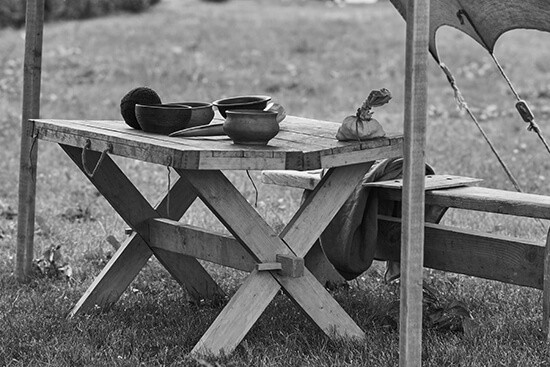
It was around this time that, when seated at the table, guests would clink their glasses together—which is still done today—saying “chin-chin,” an expression originating from China meaning: “please”… Except that this practice, brought down from the Middle Ages, wasn’t meant to be polite, but was more of a fervent hope that they would survive the banquet!
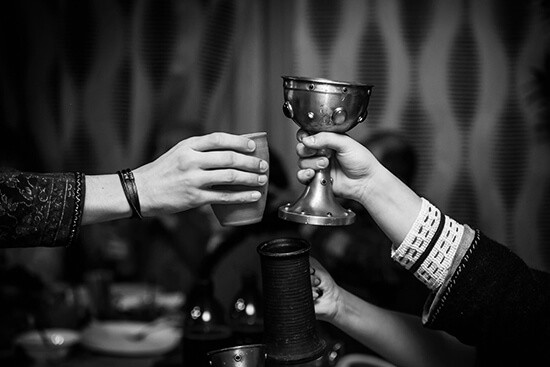
At the time, many people died from poisoning at the hands of their table mates. Knocking glasses together caused liquid to flow from one vessel to the other, mixing the contents among the guests. And as a sign of trust, diners were to look into each other’s eyes when taking the first sip, another custom of yesteryear passed on to modern times. These table rituals were intended to reassure guests that they would still be alive after their drink!
A sedentary lifestyle gave rise to the fixed dining table as we know it. But the custom of setting up a table for each meal continued in humble abodes until the 18th century.
Meanwhile, across the globe
While people in Europe were struggling to set up and take down tables, the Japanese had found an ingenious way to combine fun with function with the kotatsu.
A central coal-burning hearth, heating their thin-walled homes, was covered with a platform, then a futon to conserve heat. This “table” was not only used to warm guests’ feet during meals, but also for food preparation and other activities.
It was a brilliant idea that has endured—nowadays electric kotatsus can be found in Japan. Many Japanese families still eat on the floor, gently warmed by their table and well wrapped under a thin futon.
The sun and his table
The table, as we now know it, first made an appearance in the 16th century, thanks in part to Louis XIV, an inspirational king who loved his food, who decided to decorate it and make it more prominent.

The Sun King, as he was called, considered French cuisine to be a way for him to shine—a way to demonstrate his power. With Louis, out went the planks and trestles, and in came a solid table—a real piece of furniture. Also, with the gilding and ostentation prevalent at the time, it was decorated from end to end with gold and silver tableware. The king was seated with his family at 10 p.m. for a big public meal, known as the Grand Couvert, a symbol of his power in the day-to-day.
Like the Gauls—who copied Roman and Greek habits to assert their status—nobles, followed by commoners, embraced the fixed table to show off their social and financial success.
A table could not be a permanent fixture in the center of one-room homes, but from the 18th to the 19th century, dining rooms democratized and started to appear in middle-class homes. So now it was possible to get a fixed and more prestigious table, and to host with panache and etiquette, as it should be in “upper-class” family homes.
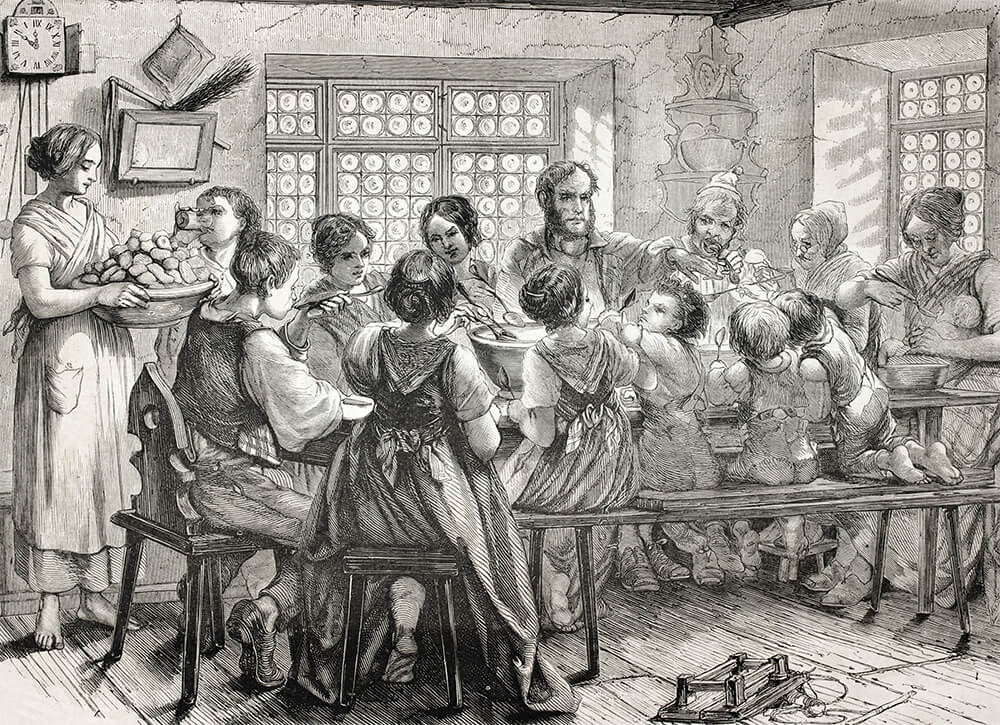
Table legs: out of sight, out of mind
Although austerity today has a more financial than social connotation, the Victorian-era table faced the judgment of Puritan times, when all forms resembling female curves were deemed scandalous, and that included table legs. For this reason, “legs” were considered inappropriate and unseemly and were hidden or covered to prevent fertile imaginations from running amok at the table.
This explains why the Chippendale style, comprised of hand-carved dining tables with sculpted and curved legs, gave way in North America to simpler tables, often influenced by the Shaker style. But the Industrial Revolution and the emergence of the middle class heralded the return of more ornate dining tables—once again, to show off prosperity.
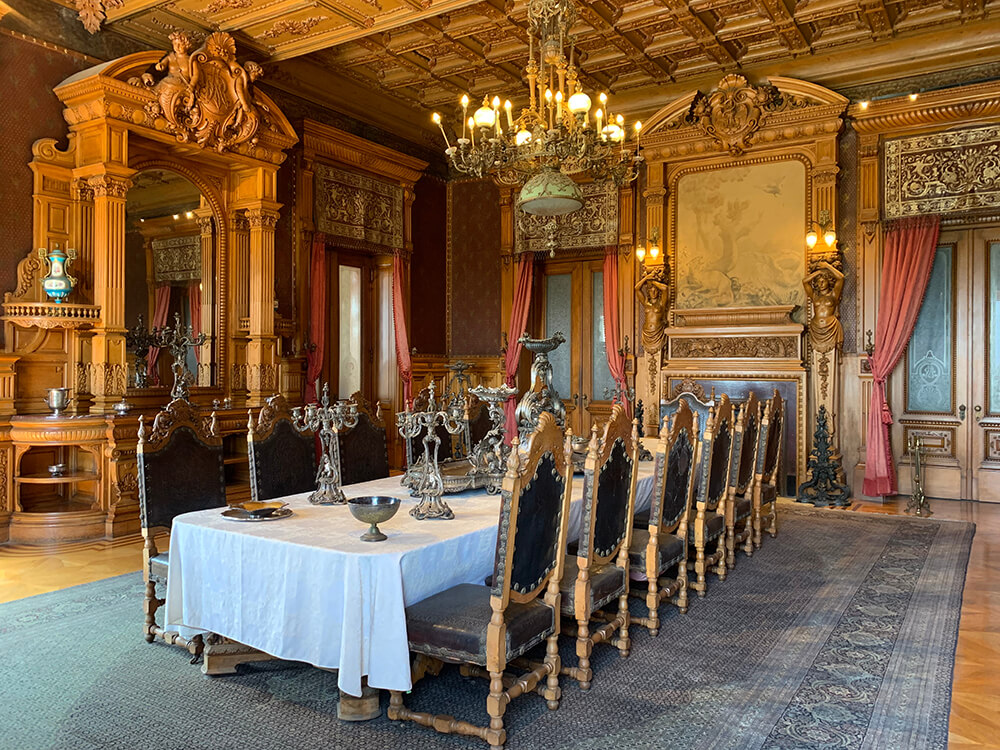
Today, the dining table is not only functional, it is also beautiful. In fact, the market now offers a wide range of tables that meet several needs—different extension systems to accommodate more guests, children doing homework, or those in a work-from-home setting—and different table sizes, making it possible to customize it to our personal living spaces.
Tables today brilliantly meet the expectations of the modern consumer, with classic or modern styles to match traditional or contemporary decors.
“Restaurant” is a French Term.
The World’s Oldest Restaurant Is in Spain.
The French Revolution Invented Fine Dining.
The World’s Largest Restaurant Is in Syria.
1) Fine Dining
Fine dining restaurants offer diners an upscale meal experience often comprising several courses (e.g., salad, appetizer, entree, dessert). These types of restaurants try to create a stylish atmosphere that speaks of elegance, exclusivity, and class.

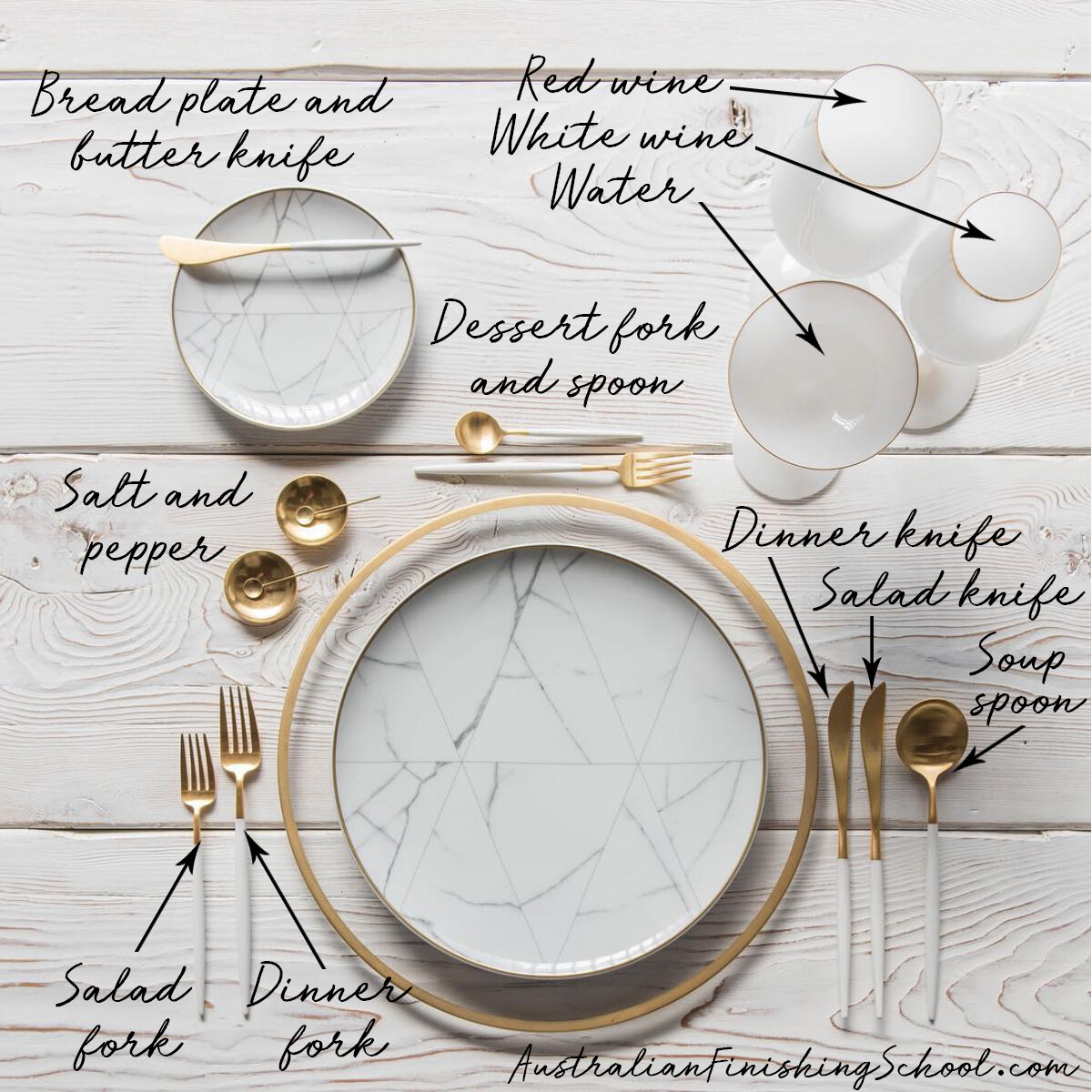
Formal dining etiquette
Executive dining etiquette skills are pivotal to every business occasion where food and drink are served. Far more than table manners and dining etiquette, Executive Presence at business meals requires poise, a polished presence and an understanding of the role of both Host and Guest. So, these are some basic dining manners.
- Contents Dining attire. Pre dining etiquette. Seating etiquette. Table setting etiquette. Eating style. Utensil handling & resting etiquette. Ordering & passing etiquette. Paying bill etiquette. Do’s & don’ts. Conclusion.
- 4. Formal dining Attire. Dress in clean & freshly pressed cloths. Your clothing should fit well. Inspect your clothing before wearing it for loose threads, missing hardware, stains & lint.
- 5. Wear dark solid colors. Wear a wool or wool blend suit with a silk tie in a coordinating color. Choose a light colored shirt. Polish your shoes & match your socks to your suit color. Your belt & shoes should match.
- 6. Pre dining etiquette Be sure to arrive on time. Call ahead if you know you will be late.
- 7. Reservations. Call a day or two ahead; or a week or two ahead if the restaurant and day are popular. Reconfirm the reservation by calling on the day of your visit
- 8. Approaching the Table in a Restaurant When being seated, if the head of the waiters of the restaurants leads the group to the table, the guests should follow the waiter and the host should follow the guests. If the waiter does not lead the group, the host should lead.
- 9. Nail the first impression When you and your dinner companion meet, start things off on the right foot by looking them in the eye, smiling warmly, and offering a firm handshake. Then, stand behind your chair until the other diners are seated.
- 10. Seating Extend the best seat to your client or to the most important guest. Seat yourself with your back facing the door or the Main part of the room.
- 11. Posture When sitting at the table, sit up straight and do not cross your legs, except at the ankle. You should not make yourself comfortable and sit back in a chair, or slouch around.
- 12. Elbows do not belong on the table. One hand, for the most part, should remain in your lap, except when you are cutting meat, breaking bread, or somehow stabilizing a dish or serving platter.
- 13. Elbows. The “no elbows on the table” rule applies only when you are actually eating. When no utensils are being used, putting your elbows on the table is acceptable.
- 14. Maintain eye contact throughout the meal No, this doesn’t mean you should stare down your dinner companion as they chew every bite of food. But regular, warm eye contact helps communicate to the other party that you are interested in what they have to say.
- 15. Make Good Use of Your Napkin Place your napkin in your lap immediately upon sitting down. Unfold it while it is in your lap.
- 16. Place the napkin folded in half With the crease toward you.
- 17. Utensil Etiquette In most situations, use the “outside-in” rule to tell which knife, fork, or spoon to use at the dinner table. Use utensils on the outside first and work your way inward. So, if you are served a salad first, use the fork set to the far left of your plate.
- 18. American style Hold your fork like a pencil, with the shank extended between your thumb and index and middle fingers. Your fourth and fifth fingers rest in your hand.
- 19. Continental Style
- 20. When taking a break Continental style: Put your fork and knife in the center of your plate with the tips facing each other in an inverted V (slightly angled).
- 21. When taking a break American style: Rest your knife on the top right of your plate (diagonally) with the fork nearby (tines up).
- 22. These two resting positions, recognized by trained wait staff, signal that you’re not ready to have your plate removed. At most restaurants, used utensils are replaced with clean ones for the next course. If, however, a waiter asks you to keep your dirty utensils for the next course, it’s okay to ask for clean ones.
- 23. Soup bowl If soup or dessert is served in a deep bowl, cup, or stemmed bowl set on another plate, place your utensil(s) on this under plate when you finish. If the under plate is too small to balance the spoon, the spoon is laid in the bowl.
- 24. Soup plate If the bowl is what is called a soup plate (shallow and wide), leave the spoon in the bowl.
- 25. Finished eating a course When each course is finished: • Place the knife and fork parallel with the handles in the four o’clock position on the right rim of the plate; • The tips rest in the well of the plate in the ten o’clock position; • The blade of your knife should face inward; • The fork tines may be either up or down.
- 26. • This position signals to the server that you’re finished. It also decreases the chance that the utensils could fall to the floor when the plates are cleared.
- 27. Temporary Placement During a Conversation. Continental Style: • The fork is laid on the side of the plate with the tines downward and the handle in the eight o’clock position. • The knife handle is laid in the four o’clock position. • If space permits, the tines are rested over the blade of the knife.
- 28. American Style: • The knife is rested on the right rim of the plate with the handle in the four o’clock position. • The fork is laid near the knife. • Fork tines upward.
- 29. Placement when Passing a Plate. To prevent flatware from falling off when the plate is passed for a second helping, • The fork and knife are centered vertically in the six o’clock position toward the middle of the plate.
- 30. Ready to Order. To show you are ready to order, close your menu and place it on the table.
- 31. Ordering Wait for the host to order, unless he/she directs you to go first. Do not order the most expensive item on the menu. Stay away from messy, hard to eat foods. If there are items on the menu that you are uncertain about, politely ask your server any questions you may have.
- 32. Passing & adding Food is passed from left to right. Pass the salt, pepper, butter and sauces to the right. If you need to stretch across the table or rise to reach items, ask for them.
- 33. Do not serve yourself “community” food (e.g. salt, pepper, dressing, etc.) until you have offered it to someone else first. Always pass the salt and pepper as a pair.
- 34. Salads Salad forks are often smaller than a traditional dinner fork and will be located to the far left of the place setting. You may use your knife to cut portions of the salad. If you use your knife, do not return it to the table top; instead place it at the top edge of the plate with the cutting edge facing you.
- 35. Bread & butter Bread and butter may be served with your meal. Place one roll on the plate provided (the one just above your forks). Do not cut the roll open, slather butter on it, and “dig in.” Instead, break the roll apart, tear off a small, bite-sized portion, butter it, and eat it. Do this for the entire roll.
- 36. The main course When being served by the wait-staff, do not begin eating until everyone at your table has been served. For this course you use the dinner fork and the dinner knife, or the steak knife if appropriate. Try to “cut” your meat, not “saw” it. Hold the fork as though you were holding a pencil. Do not raise your elbow to get a good grip on any food item.
- 37. When someone approaches you, stand up to greet them by shaking hands Drink and eat quietly without slurping or clinking utensils. Your utensils are for eating, not waving in the air while you’re talking
- 38. Cutting Food Cut your food into only one or two bite- sized pieces at a time.
- 39. When in doubt about whether to use fingers or a utensil to eat a particular food, watch those about you and proceed accordingly. If you’re still in doubt, use a utensil, usually a fork.
- 40. Beverages Beverages may be offered before the meal. Follow the lead of your host. It is recommended that you NEVER order alcohol of any kind. You may order sparkling water, tea, soda, juice, or other items from the menu.
- 41. Deserts You may use whatever utensils are provided to eat dessert. When your are finished with your main course and your dessert is already set, you may go ahead and eat it, but do not push away your dinner plate. Do not pick up your dessert plate and place it on your dinner plate, simply reach across your dinner plate and eat your dessert. If your dinner plate is removed by the server, you may move your dessert dish in front of you. No swapping desserts with your neighbor.
- 42. Tasting Another Person’s Food. Either hand your fork to the person, who can spear a bite-sized piece from her plate and hand the fork back to you, or (if the person is sitting close by) hold your plate toward her so that she can put a morsel on the edge.
- 43. Something in your mouth? Take something out of your mouth with the utensil used to put it in. Hide it on your plate, not in napkin or under plate.
- 44. Reaching across the table There are various degrees of reaching for something across a table that are perfectly permissible, but one should not make an enormous stretch or rise from one’s seat to reach for something. • If you have easy access to the salt and pepper and your neighbor on either side does not, it is polite to offer it first to both of them before using it yourself.
- 45. Excusing Yourself Simply say “excuse me, please; I’ll be right back” when leaving for the restroom or washroom. Leaving without a word is rude.
- 46. Place your napkin on your chair when excusing yourself for a moment during the meal.
- 47. Speaking While Eating. If you have more than a few words to say, swallow your food, rest your fork on your plate, and speak before you resume eating.
- 48. Don’t Drink with a Full Mouth. To avoid leaving food on the rim of the vessel, make sure the mouth is free of food.
- 49. Blot the lips with a napkin before & after taking a sip of a beverage.
- 50. Something Caught in your Teeth. When food is caught between the teeth that is annoying or uncomfortable, wait to remove it privately.
- 51. Sneezing, Coughing, Blowing your Nose. When sneezing or coughing at the table is unavoidable, cover your nose or mouth with a napkin and proceed as quietly as possible. Except in an emergency, don’t use a napkin to blow your nose. Leave the table and use a handkerchief instead.
- 52. Dropped Utensils. If you drop a utensil, pick it up yourself if you can and let the waiter know you need a new one. If you cannot reach it, inform the waiter and ask for a replacement.
- 53. Meal over When your meal is over, and your host has signified this by placing his or her napkin to the left of the place setting, you too may follow suit. Place your silverware at the four o’clock position to signal to your server that you are through.
- 54. Paying the bill It is the responsibility of the host to reach for the bill. As a host, you might show up early and give your credit card in advance to the head waiter of the restaurant. Another option is to tell your server (when you are seated) that the bill should be given to you at the end of the meal.
- 55. If when the bill arrives, you find that there is a mistake on the charges, do not take out a calculator, or try to argue about the bill with the server. Go to the head server’s station and resolve the problem with the bill.
- Accidents at the table Even the most careful eater occasionally has an accident at the table. If you spill food, even a bit of jelly or sauce, you may quietly retrieve it with any convenient utensil—knife, fork, spoon—and place it at the side of your plate.
- If a little food or liquid is dripped onto your clothing, you might dip a small corner of the napkin into your water glass and lightly rub the spot. Try to be as inconspicuous as possible, and do not fret. Everyone does this from time to time
- Swallowing the wrong way & choking All of us swallow the wrong way at times and suffer a minor choking fit. When someone chokes, it is the time for the other people at the table not to look at the person but to talk among themselves, so that he will be able to regain his composure in peace.
- Do’s & Don’ts of dining General Etiquette: • Turn off cell phones and beepers. • Have proper posture. • Keep elbows off the table. • Do not apply makeup or comb your hair at the table.
- Utensils: • Remember never to hold a utensil in a fist. • Do not talk with your utensils. • Set the utensils on your plate, not the table, when you are not using them. • Do not use both hands simultaneously to hold utensils and cups
- Napkins: • Use your napkin frequently. • Do not use your napkin as a tissue. • If you have to sneeze, turn your head away from the table.
- While Eating: Wait for everyone to get their meal before starting yours. Don’t talk with your mouth full. Don’t chomp ice.
- Take small bites. Cut your salad into bite size pieces if necessary. Try to pace yourself to finish at the same time as everyone else.
- If you leave the table, excuse yourself and place your napkin on your seat. When you are finished eating, place your napkin neatly to the left of your plate, but do not push your place setting away from you.
- Conclusion • No matter in which culture, dining etiquette are very important to everyone!! • Dining etiquette give a good or bad impression of an individual. The more the etiquette one practices the more comfortable one will be in professional dining settings.





